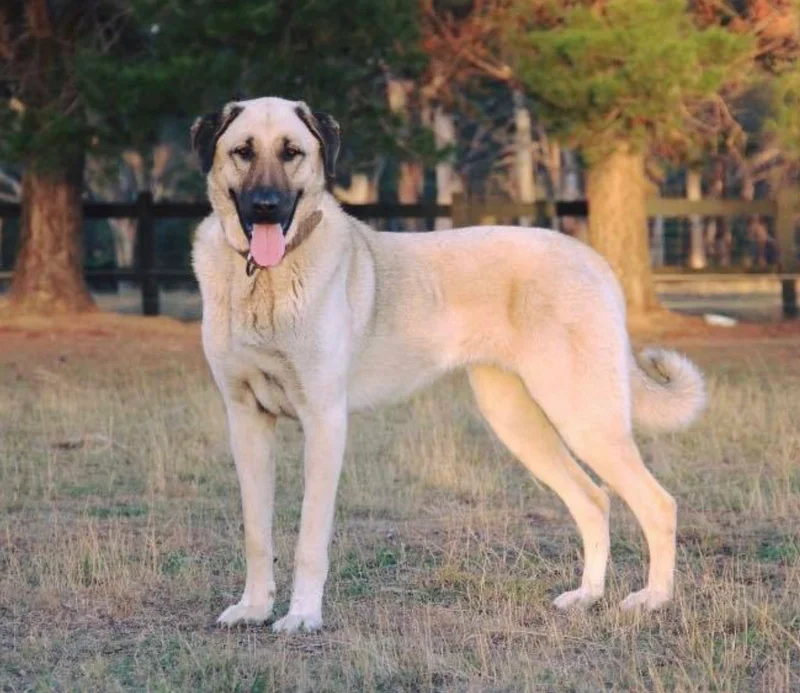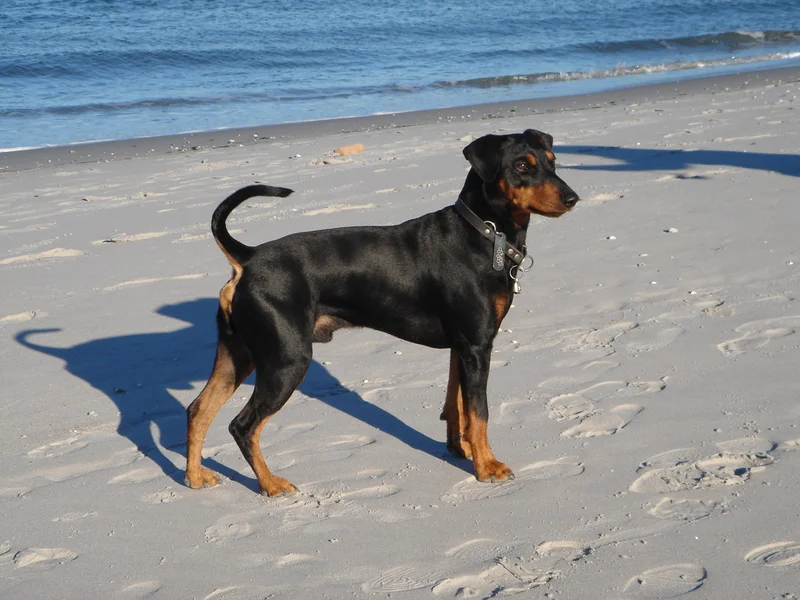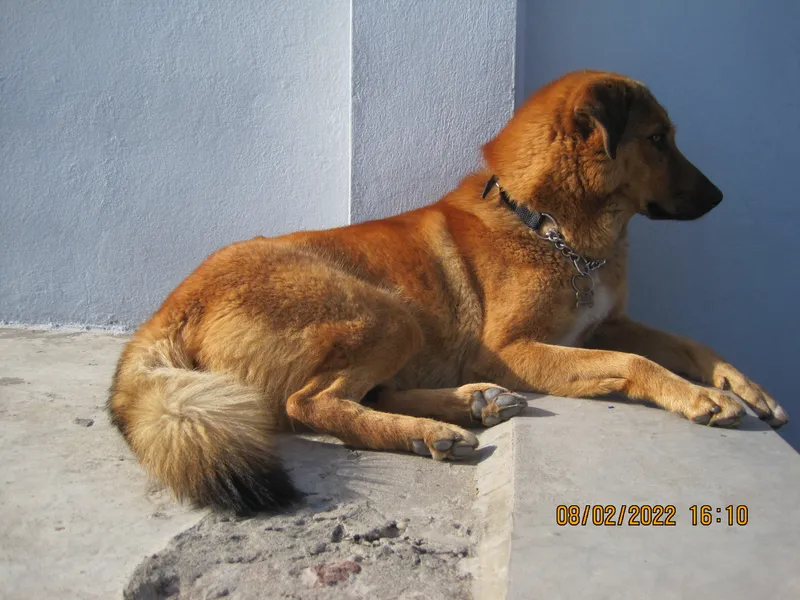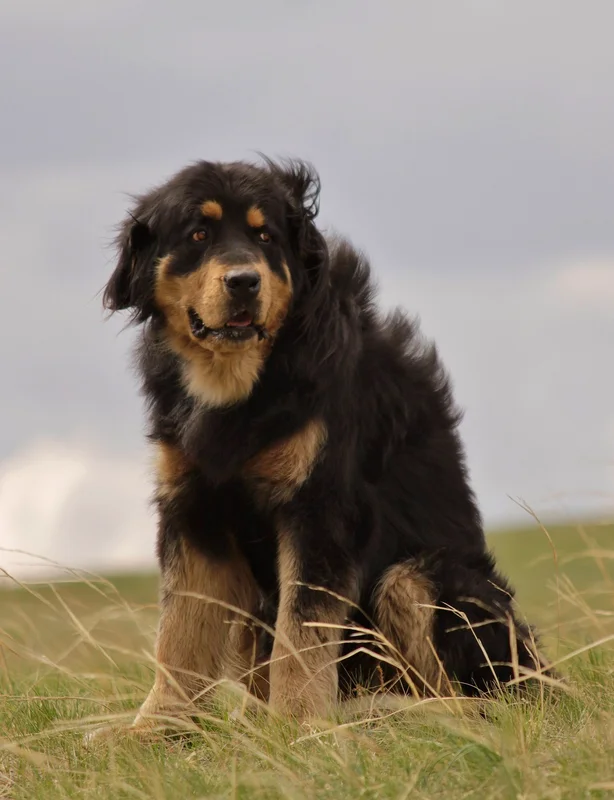Dogo Argentino
The Dogo Argentino is a powerful, all-white breed developed for big-game hunting. Known for its loyalty and protective instincts, it requires experienced handling and ample exercise.
Overview
🐕Breed Overview
✨Key Traits
💡What Makes Dogo Argentino Special
The Dogo Argentino's key traits include its remarkable strength and agility, making it an exceptional hunter. Its loyalty to family members is unparalleled, often forming strong bonds with children and adults alike.
This breed is also known for its intelligence, which allows it to excel in various canine sports and activities. The Dogo Argentino's protective instincts make it a natural guardian, ensuring the safety of its home and loved ones.
These traits, combined with their playful nature, make them a well-rounded breed suitable for active families.
The Dogo Argentino is a strikingly powerful and muscular breed, known for its all-white coat and impressive stature. Developed in Argentina in the late 1920s by Dr. Antonio Nores Martinez, this breed was specifically designed for big-game hunting, particularly wild boar.
The Dogo Argentino is not only a skilled hunter but also a loyal companion, making it a popular choice for families and individuals alike. With a height ranging from 24 to 27 inches and a weight of 88 to 120 pounds, this breed commands attention wherever it goes. The Dogo Argentino's appearance is characterized by its strong, athletic build and broad head, which gives it a distinctive look reminiscent of the American Bulldog.
Its short, smooth coat is entirely white, with any markings considered a flaw. This breed is known for its intelligence and trainability, but it requires an experienced owner who can provide consistent training and socialization from an early age. In terms of temperament, the Dogo Argentino is known for its bravery and protective instincts.
While they can be reserved with strangers, they are affectionate and loyal to their families. Proper socialization is crucial to ensure they get along well with other pets and children. With a life expectancy of 9 to 12 years, the Dogo Argentino can be a wonderful addition to the right home, especially for those who lead an active lifestyle and can provide the exercise and mental stimulation this breed needs.
Overall, the Dogo Argentino is a remarkable breed that excels in various roles, from hunting to companionship. Its unique combination of strength, loyalty, and intelligence makes it a breed worth considering for those who can meet its needs.
🎉Fun Facts
Despite their size and strength, they are gentle and affectionate with their families.
The Dogo Argentino is the only breed recognized by the FCI from Argentina.
They are known for their exceptional hunting abilities, particularly in tracking and holding large game.
Breed Characteristics
Family & Friends
Good Behavior
Get Up & Go
Household Harmony
Temperament & Personality
✨Key Traits
🐕Core Temperament
The Dogo Argentino is characterized by its courageous and tenacious temperament. They are natural guardians, fiercely loyal to their families, and protective of their territory.
While they can be reserved with strangers, they are affectionate and gentle with those they know. This breed requires early socialization to ensure they develop into well-rounded adults.
Their intelligence and eagerness to please make them trainable, but they can also be stubborn, requiring a confident owner who can establish clear boundaries. Overall, the Dogo Argentino is a loving and devoted companion that thrives on human interaction.
💫Personality Profile
The Dogo Argentino is known for its brave and loyal nature. They are protective of their families and can be reserved around strangers, making them excellent guard dogs.
This breed is intelligent and eager to please, which can make training a rewarding experience, though they may exhibit stubbornness at times. With proper socialization, they can get along well with children and other pets, showcasing their gentle side.
However, their strong prey drive means they should be supervised around smaller animals. Overall, the Dogo Argentino is a loving and devoted companion that thrives on human interaction.
🔊Vocal Tendencies
The Dogo Argentino has a moderate noise level. They may bark to alert their owners of strangers or unusual activity, but excessive barking is not typical.
Their vocalizations can vary from barks to growls, especially when they are excited or playing. Proper training and socialization can help manage their barking tendencies, ensuring they are well-behaved in various situations.
Affection & Social Traits
Energy & Activity
Communication Style
Care Requirements
🏃♂️Exercise Requirements
Daily Exercise
The Dogo Argentino is a highly active breed that requires substantial daily exercise to maintain its physical and mental well-being. Ideally, an adult Dogo Argentino should engage in at least 60 to 90 minutes of vigorous exercise each day. This can include activities such as running, hiking, playing fetch, or participating in dog sports like agility or obedience training.
Puppies and younger dogs may require shorter sessions of play and exercise, gradually increasing in duration as they mature. For senior dogs, moderate exercise is essential to keep them healthy without overexerting them. Regular exercise not only helps manage their weight but also reduces the likelihood of behavioral issues stemming from boredom or pent-up energy.
Insufficient exercise can lead to destructive behaviors, anxiety, and health problems, making it crucial for owners to establish a consistent exercise routine.
Preferred Activities
🏠Living & Adaptability
Space Requirements
The Dogo Argentino thrives in environments that provide ample space for exercise and play. While they can adapt to various living situations, including urban apartments, they do best in homes with large yards or access to open areas where they can run freely.
Owners in smaller living spaces must commit to providing regular outdoor exercise and mental stimulation to prevent boredom. The breed's size and energy level necessitate a space where they can move around comfortably.
Lack of adequate space can lead to frustration and destructive behaviors, so potential owners should ensure they can meet the Dogo Argentino's spatial needs.
Climate Preference
🍲Feeding Guide
Schedule
Food Types
Portion Size
Special Nutritional Needs
The Dogo Argentino may benefit from a diet rich in protein to support its muscular build. Owners should be cautious of food sensitivities and may consider grain-free options if allergies are suspected. Regular veterinary check-ups can help monitor the dog's health and dietary needs.
✨Grooming Requirements
Grooming Overview
The Dogo Argentino has a short, smooth coat that requires minimal grooming. Regular brushing with a rubber grooming mitt or a soft brush will help remove loose hair and keep the coat healthy.
Bathing should be done as needed, typically every few months, or when the dog gets particularly dirty. Regular nail trimming, ear cleaning, and dental care are also essential to maintain overall health.
Despite its short coat, the Dogo Argentino does shed moderately, so owners should be prepared for some hair around the house.
Care Schedule
Brush weekly; bathe as needed; trim nails every 2-4 weeks.
Health Profile
⚕️Health Care
Regular health care is crucial for the Dogo Argentino's lifespan. Routine veterinary check-ups, vaccinations, and preventive treatments can help detect health issues early and maintain optimal health.
Owners should also be proactive in managing their dog's weight, providing a balanced diet, and ensuring regular exercise to support overall well-being. Early detection and treatment of health problems can significantly improve the quality of life and longevity of this breed.
Health Issues Overview
⏳Average Lifespan
Genetic Factors
Genetics play a significant role in the Dogo Argentino's lifespan, with certain hereditary health issues being more prevalent in the breed. Responsible breeding practices, including health testing and genetic screening, can help reduce the risk of inherited conditions.
Potential owners should seek reputable breeders who prioritize genetic diversity and the overall health of their breeding stock. Understanding the genetic background of a Dogo Argentino can provide insights into potential health risks and longevity.
Living Conditions
The Dogo Argentino's lifespan can be influenced by various environmental factors, including housing conditions, climate, and social interactions. Dogs living in homes with ample space for exercise and play tend to live longer, healthier lives.
Additionally, a stable and loving environment with regular socialization can positively impact their mental well-being, contributing to a longer lifespan. Owners should ensure their Dogo Argentino has access to outdoor areas for exercise and play, as well as opportunities for social interaction with other dogs and people.
🏥Common Health Issues
Hip Dysplasia
Warning Signs
🔬Diagnosis
X-rays and physical examination by a veterinarian.
💊Treatment
Surgery or medication may be necessary in severe cases.
📝Management Tips
Maintain a healthy weight, provide joint supplements, and engage in low-impact exercise.
Deafness
Warning Signs
🔬Diagnosis
Veterinary examination and hearing tests.
💊Treatment
No cure, but training can help manage the condition.
📝Management Tips
Select breeding stock with normal hearing to reduce incidence; provide training and socialization.
🛡️Preventive Care
🔬Hip Evaluation
Hip evaluation to assess for hip dysplasia and other joint issues.
📅 Every 1-2 years, especially for breeding dogs.
🔬BAER Test
Hearing tests to check for deafness, especially in puppies.
📅 Before breeding and at 8 weeks of age.
Training
🧠Intelligence & Trainability
💪Work Drive
Dogo Argentinos have a high work drive, stemming from their history as hunting dogs. They thrive when given tasks or jobs to do, whether it's participating in dog sports, engaging in scent work, or simply accompanying their owners on outdoor adventures.
Providing mental stimulation through puzzle toys or training exercises can help satisfy their need for engagement. Without sufficient mental and physical challenges, Dogo Argentinos may become bored, leading to destructive behaviors.
Owners should aim to incorporate a variety of activities into their dog's routine to keep them happy and fulfilled.
⚠️Training Considerations
Dogo Argentinos can exhibit strong-willed and independent behaviors, which may pose challenges during training. They may be stubborn at times, requiring consistent and firm training methods.
Socialization is crucial from a young age to ensure they are well-adjusted and comfortable around other dogs and people. Potential owners should be prepared to invest time in training and socialization to mitigate any aggressive tendencies that may arise if they are not properly managed.
Using positive reinforcement techniques, such as treats and praise, can help motivate the Dogo Argentino during training sessions. Additionally, establishing a strong bond with the dog through regular interaction and play can enhance their responsiveness to commands.
📝Training Tips
Training a Dogo Argentino requires patience, consistency, and positive reinforcement. Start with basic obedience training early in life, focusing on commands like sit, stay, and come. Socialization is equally important; expose your Dogo to various environments, people, and other animals to help them develop a well-rounded temperament.
Incorporate fun activities, such as agility training or scent work, to keep them engaged and mentally stimulated. Remember to keep training sessions short and enjoyable to maintain their interest. Regularly reinforce good behavior with treats and praise, and avoid harsh corrections, as this can lead to fear or aggression.
Consistency in commands and routines will help your Dogo Argentino understand expectations and build a strong foundation for training.
History & Heritage
📜Origin Story
The Dogo Argentino's origin can be traced back to the early 20th century in Cordoba, Argentina, where Dr. Antonio Nores Martinez sought to create a powerful and loyal hunting dog.
He began with the Cordoba Fighting Dog, a breed known for its ferocity and strength, and crossed it with various breeds, including the Great Dane and Bull Terrier, to develop a dog that was not only a formidable hunter but also a gentle companion. The breed was designed to hunt large game such as wild boar and pumas, and its development was marked by a commitment to eliminating aggressive traits in favor of a stable and cooperative temperament.
By 1964, the Dogo Argentino was officially recognized by the Federación Cinológica Argentina, and it has since become a beloved breed in its homeland and beyond.
⏳Development History
The Dogo Argentino was developed in the late 1920s by Dr. Antonio Nores Martinez, who aimed to create a versatile hunting dog that could also serve as a loyal companion.
The breed was primarily derived from the now-extinct Cordoba Fighting Dog, which was known for its strength and tenacity. To enhance its hunting capabilities, Martinez crossed the Cordoba with several other breeds, including the Great Dane, Boxer, Spanish Mastiff, and Bull Terrier.
Through selective breeding, he focused on traits such as bravery, loyalty, and a cooperative nature, ultimately stabilizing the breed's genotype and phenotype by the late 1940s. The Dogo Argentino has since gained recognition for its hunting prowess and protective instincts.
🛡️Purpose & Historical Role
Originally bred for big-game hunting, the Dogo Argentino has also been utilized in various roles, including search and rescue, police assistance, and as service dogs. Its strong protective instincts make it an excellent guard dog, while its intelligence and trainability allow it to excel in obedience and agility competitions. The breed's historical role as a cooperative hunter has shaped its temperament, making it well-suited for socialization with other dogs and pets.
🏺Cultural Significance
The Dogo Argentino holds a significant place in Argentine culture, primarily as a symbol of bravery and loyalty. Developed for big-game hunting, it has been celebrated in various forms of media, including literature and film, as a courageous companion.
The breed's history is intertwined with the Argentine gaucho culture, where it was used to hunt wild boar and protect livestock. Its reputation as a fearless protector has made it a popular choice among those seeking a loyal guardian.
The Dogo Argentino is also recognized as the only breed native to Argentina that is acknowledged by the Fédération Cynologique Internationale (FCI).
Conservation Status
This breed is less common but has stable populations in certain regions.









